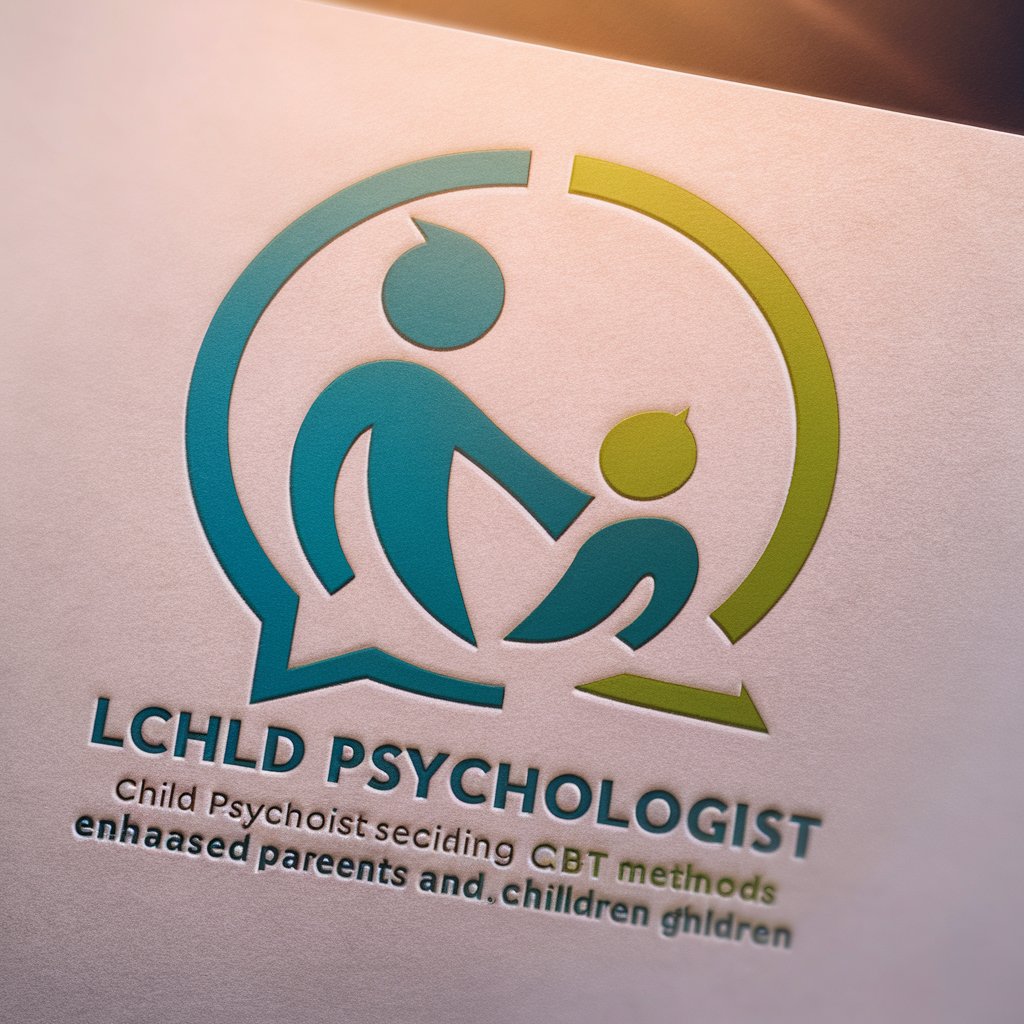
Skapa en fungerande rutin för ditt barn - Structured Child Routines

Hello! I'm here to help you create effective routines for your child's daily life.
Empowering Children with AI-Driven Routines
Describe a daily challenge you face with your child's routine.
What aspect of your child's day lacks a consistent routine?
How do you feel about your current approach to your child's daily responsibilities?
Which part of your child's day do you wish to see more structured?
Get Embed Code
Creating a Working Routine for Your Child
The fundamental aim of 'Creating a Working Routine for Your Child' is to assist parents and guardians in establishing and maintaining effective daily routines for their children. These routines are designed not only to structure a child's day-to-day life but also to enhance their social skills, academic performance, and overall well-being. By focusing on tasks and responsibilities that children can undertake, this approach encourages the development of independence and self-regulation from an early age. For example, a routine might include specific times for homework, chores, play, and bedtime, each accompanied by clear expectations and support to help the child succeed. Powered by ChatGPT-4o。

Main Functions of Creating a Working Routine for Your Child
Establishing Daily Routines
Example
Creating a structured daily plan that includes wake-up, meal, study, play, and bedtime schedules.
Scenario
For a child struggling to complete homework on time, a tailored after-school routine ensures dedicated study time, thus improving homework completion and reducing evening stress.
Encouraging Responsibility
Example
Assigning age-appropriate chores and tasks to foster independence and a sense of achievement.
Scenario
A parent assigns their 8-year-old the responsibility of setting the table for dinner, gradually teaching the child about contributing to family tasks and managing simple responsibilities.
Improving Social and Academic Skills
Example
Incorporating social activities and educational tasks within the routine to promote skill development.
Scenario
Including group playdates and reading time in a child's routine to enhance interpersonal skills and literacy, respectively.
Customizing Routines for Individual Needs
Example
Adjusting routines to suit the unique needs and developmental stage of each child, ensuring they are both challenging and achievable.
Scenario
For a child with ADHD, creating a routine with frequent, short breaks for physical activity can help manage energy levels and improve focus on tasks.
Ideal Users of Creating a Working Routine for Your Child
Parents and Guardians
Individuals responsible for children's daily care and upbringing, seeking structured approaches to manage daily activities and foster child development.
Educators and Childcare Providers
Professionals in educational and childcare settings can utilize these strategies to create consistent routines that support children's learning and socialization in group environments.
New Parents
New to parenting and looking for guidance on establishing effective routines to ensure their child's healthy development and ease the transition into parenting roles.
Parents of Children with Special Needs
Seeking tailored routines that accommodate the unique challenges and strengths of children with developmental disorders, behavioral issues, or learning disabilities, promoting their autonomy and skill acquisition.

How to Implement a Functional Routine for Your Child
1
Start by visiting yeschat.ai for a complimentary trial, which requires no login or subscription to ChatGPT Plus.
2
Identify specific areas in your child’s daily routine that need structure, such as morning preparations, homework time, or bedtime.
3
Establish clear, realistic goals for each part of the routine, involving your child in the process to enhance their commitment and understanding.
4
Create visual aids or checklists to help your child remember their new routines and responsibilities.
5
Regularly review and adjust the routine as needed, celebrating successes and addressing challenges together.
Try other advanced and practical GPTs
Wine Suggestion
Discover, Learn, and Enjoy Wine with AI

Sir Rico | CoachCraftBot
Empowering Coaches with AI Wisdom

Medium Article Booster
Elevate Your Medium Writing with AI

中国IVD行业GPT
Empowering IVD Innovation with AI

SEO Content Master
Elevate Your SEO Game with AI-Powered Content

Regen Alliance Engagement Circle Guide
Empowering Regenerative Communities with AI

Image Research
Discover images smarter, faster with AI

InstaCraft Writer
Crafting daily inspiration, powered by AI

Eco Conselheiro
Empowering Sustainable Choices with AI

HOFOZ War Room
Empower Decisions with AI Wisdom

Feijoada Mood Chef
Tailoring Feijoada to Your Mood

Better Bullets!
Transform Your Copy into Conversions

FAQs on Establishing a Functional Routine for Your Child
How can I motivate my child to follow their routine?
Incorporate rewards and positive reinforcement for following the routine, and ensure the tasks are age-appropriate and achievable.
What should I do if my child resists the new routine?
Stay consistent and patient. Use gentle reminders rather than force, and consider whether adjustments to the routine might be necessary.
How detailed should the routine be?
The routine should be detailed enough to provide structure but flexible enough to accommodate unexpected changes or challenges.
Can routines help with my child's behavioral issues?
Yes, consistent routines can provide a sense of security and predictability, which may help improve behavior.
How do I balance structure with free time?
Ensure the routine includes blocks of unstructured time to allow for relaxation and free play, which are important for your child’s development.





